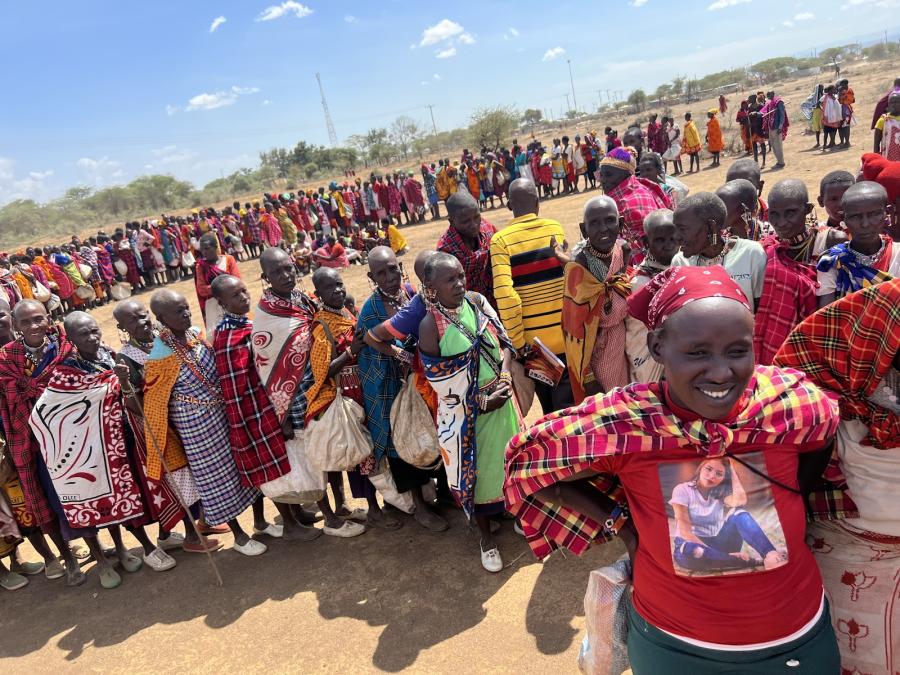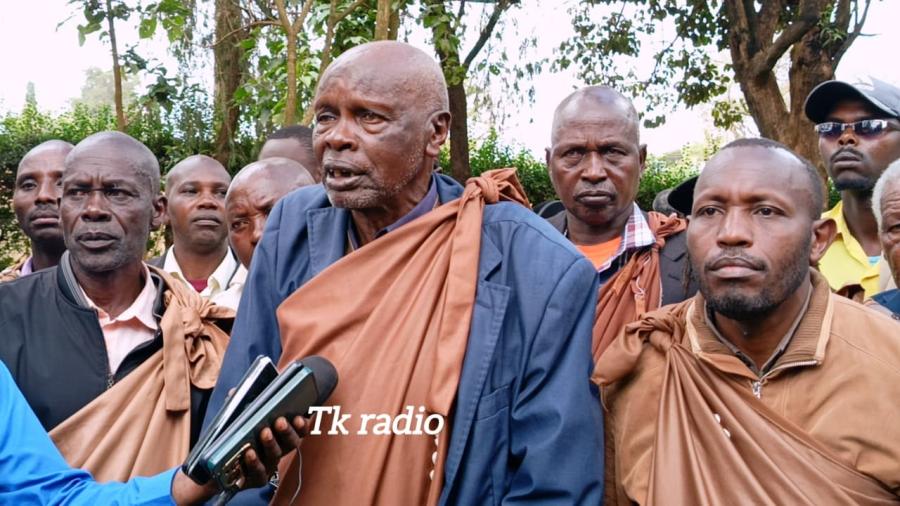At the start of each academic term in Kenya, peace becomes a rare phenomenon in many households as both parents and students get hysterical about the overpowering burden of education. This situation is much worse in pastoral areas where 100 percent of pastoralists live. Their way of life, which involves moving from place to place in pursuit of water and grass for their livestock, is totally incompatible with the current education curriculum.
The Kenyan 8-4-4 education system was introduced 18 years ago, ostensibly to equip students with the technical knowledge and skills necessary for self-employment. It requires schoolchildren to study more technical and business-oriented subjects such as carpentry and arts-and-crafts. This curriculum was envisioned as a prescription for the harsh reality of high unemployment, allowing students to participate fully in the social, political, and economic well-being of Kenya. The number of examinable subjects increased from six to 12 for primary school students and from eight to twelve for high school students. In order for a child to enter high school, he or she must attain a mean grade of B-minus.
The majority of school-going children in Kenya live in rural areas. Most of their parents make about a dollar a day, yet the government offers no provisions to furnish or supply schools with necessary books. Parents must purchase books and materials for technical and business-oriented subjects at astronomical prices, in addition to paying other levies. This system has played a major toll on the Maasai herders, alienating them from concepts of life that they are familiar with.
Lerionka’s Story
Lerionka, a 10-year-old Maasai boy from Oloombokishi in Narok, lives six miles from the nearest school. He has to wake up at dawn and begin the long walk to school because, where he lives, a school bus is as strange a phenomenon as a space shuttle. On his back is a bag stuffed with more than a dozen books covering more than 10 subjects. A couple of hours later, after braving wildlife-packed terrain, he arrives at school and settles down for a grueling nine-lesson day. The language of instruction is English or Swahili, and he learns in a history class that the famous Maasai seer was named Laibon-Lenana, even though his grandfather has told him the seer was called Oloiboni-Olonana. Lerionka is at a loss—he wonders who is right, his teacher or his grandfather.
At the end of the day, the teacher assigns homework to Lerionka to be done that evening and handed in the next morning. He has to read about coffee farming in Brazil, sheep rearing in Australia, and potato growing in central Kenya, but nothing about Maasai pastoralism. At sundown, the tired and confused child finally arrives home and can hardly keep his eyes open after dinner. His hut does not have a lantern to provide lighting to enable him do his homework. He collapses in bed and is awoken only by the voice of his mother calling out the next morning.
After arising again at dawn, Lerionka helps his mother open the calf pen, then holds the calves as his mother milks the cows. He then gets ready for school, drinks milk for breakfast, and, after ensuring that all the cows are in good health, he takes off for another day of school. During the weekends, he must watch the herd so the herdsman can rest, and has no time to read his books or prepare for high school entrance examinations.
At the end of primary school, all students—irrespective of their regional backgrounds—sit for the same high school entrance examination. Children from urban areas perform better than pastoralists from arid and semi-arid areas. Only a negligible minority of pastoralist students manage to make it to high school, and most end up dropping out either in high school or half way though college because they can’t afford to stay.
Children like Lerionka must cope with exhaustion, insecurity, dispirited teachers, hunger (no lunch is served in school), a heavy workload, and confusion about his history. Teachers in Kenya belong to job Class F, meaning they receive a monthly remuneration of only US$80. When teachers are transferred from the comforts of affluent urban schools in developed regions and posted to these far-flung areas—called hardship zones—they consider it punishment. As such, in these areas, the underpaid, overworked, and demoralized teachers are not as enthusiastic as they would normally be elsewhere. City schools, on the other hand, have electricity and are easily accessible, provide lunch, their teachers are well-paid, they have libraries and other academic amenities, and students’ parents are well-educated and help their children with homework.
The Bicultural Approach
Maasai culture revolves around cattle, and learning is a life-long process whose graduation is celebrated at every stage with elaborate fêtes and pomp. It is undeniable, however, that today more than ever the Maasai need contemporary education, taking their culture into account, to create a double-pronged approach to modern day challenges. Throughout Kenya’s history, the Maasai have lacked proper education. During the onset of colonialism, the Maasai—once endowed with large herds and stock—were confined to reserves by colonial authorities while the highland glades were taken over by colonial settlers. Forced to remain on reserves, Maasai could not move their herds to the highlands during the dry spells and droughts that culminated in massive deaths of livestock, thus dismembering the Maasai’s economic lifeline. The Maasai have never recovered from this loss, made worse by inconsiderate post-colonial regimes that fully embrace the colonial-era education curricula. As Kenya moves toward capitalism and the need for education increases, the Maasai and others in the same economic bracket are gradually waking to new challenges everyday. A study of the Narok Maasai reserve, conducted by a Narok education officer and compiled by Maasai Education Discovery, shows that between 1996 and 2000, 3,889 Maasai children graduated from high school and only a meager 46 acquired grades sufficient to enter a university. Of this handful, only half managed to graduate with college degrees, thanks to the high cost of education and unfriendly education policies. As a result, Maasai schools have continued to experience increasingly low enrollment rates, and the trend is expected to persist if no mechanism to amend it is put in place. Even though the administration of new president Mwai Kibaki has introduced free education for Kenya’s primary schools, the biggest benefits will likely go to urban students. Costs not included under Kibaki’s plan will still hold back rural Maasai.
A bicultural approach to education would pull the Maasai community from this quagmire. Within the current education system, the Maasai method of teaching is not accepted, and is even dismissed as old-fashioned. The good old knowledge of Maasai elders is going to waste. Teaching Maasai children using both the Maasai cultural approach and Western methods would assure Maasai students that what they learn in school is applicable to their communities and daily lives.
Michael Tiampati is a Maasai journalist. Ledama Olekina is director of Maasai Education Discovery.



